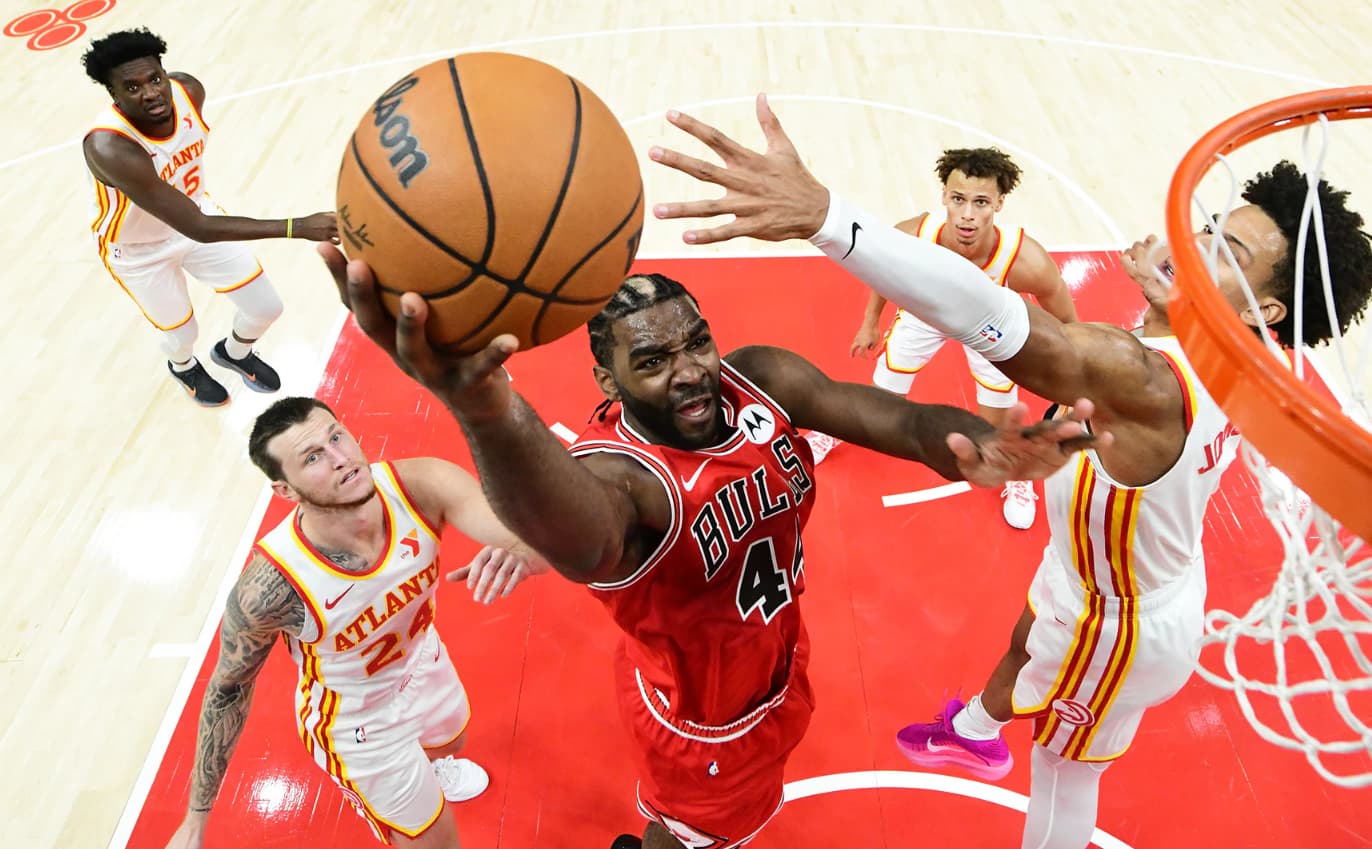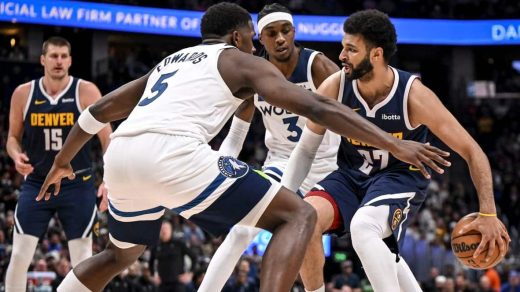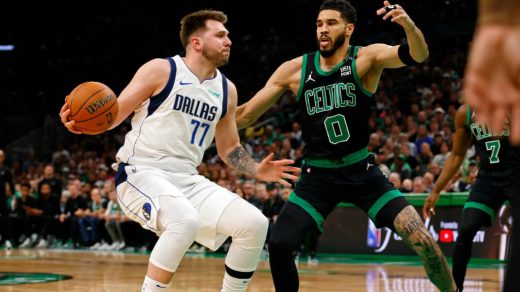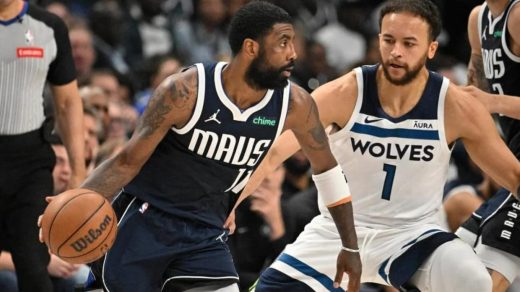When basketball fans think about exciting Eastern Conference matchups, the Atlanta Hawks vs Chicago Bulls Match Player Stats that bring drama and intensity.
These two teams bring completely different playing styles to the court, creating fascinating battles that keep viewers on the edge of their seats.
The Bulls, with their veteran experience and explosive scoring ability, face off against the young, fast-paced Hawks, who rely heavily on three-point shooting and quick transitions.
Understanding the Atlanta Hawks vs Chicago Bulls Match Player Stats goes far beyond just looking at who scored the most points.
These numbers tell the real story of how each team executed its game plan, which players stepped up in crucial moments, and what tactical decisions ultimately determined the winner.
Every assist, rebound, and defensive stop contributes to a larger narrative that helps us appreciate the complexity and beauty of professional basketball.
The statistical breakdown reveals individual performances, team strategies, and key momentum shifts that casual viewers might miss during live action.
From Trae Young’s playmaking brilliance to DeMar DeRozan’s mid-range mastery, each player’s contribution becomes clear when we dive deep into the numbers.
Atlanta Hawks vs Chicago Bulls Match Player Stats

This comprehensive analysis will help you understand not just what happened, but why it happened and what it means for both teams moving forward.
Why Atlanta Hawks vs Chicago Bulls Match Player Stats Matter?
Basketball statistics serve as the foundation for understanding how games are truly won and lost. When analyzing any matchup, especially one as competitive as Hawks versus Bulls, the numbers reveal insights that go far beyond the final score.
Key reasons why these stats are crucial:
- Performance evaluation – Stats show which players delivered when their team needed them most
- Strategic analysis – Numbers reveal how well each team executed their game plan
- Future preparation – Coaches use these stats to prepare for upcoming matchups
- Fan engagement – Stats help fans appreciate the finer details of basketball strategy
- Player development – Individual stats highlight areas where players can improve
The statistical breakdown also helps identify trends and patterns that might not be obvious during live viewing. For example, a player might seem to be having a great game based on scoring, but their stats might reveal poor shooting efficiency or defensive struggles.
Team Background: Hawks and Bulls
Atlanta Hawks
The Atlanta Hawks have built their identity around speed, shooting, and smart basketball. Under their current system, they prioritize fast-paced offense that keeps opponents constantly scrambling to keep up.
Hawks’ core strengths:
- Elite point guard play with Trae Young orchestrating the offense
- Three-point shooting that stretches defenses thin
- Pick-and-roll execution that creates easy scoring opportunities
- Transition basketball that capitalizes on opponent mistakes
- Young roster with plenty of room for growth
The Hawks represent the modern NBA approach – they shoot lots of threes, play at a fast pace, and rely heavily on analytics to guide their decisions. Their success depends largely on their ability to create and make open shots.
Chicago Bulls
The Chicago Bulls bring a different approach to basketball, mixing veteran savvy with explosive athleticism. Their roster combines experienced players who know how to win with younger talent that provides energy and athleticism.
Bulls’ key characteristics:
- Mid-range excellence led by DeMar DeRozan’s shooting
- Athletic finishing showcased by Zach LaVine’s drives
- Physical defense that disrupts the opponent’s rhythm
- Veteran leadership that helps in clutch situations
- Balanced scoring from multiple contributors
The Bulls represent a more traditional basketball approach that emphasizes fundamentals, mid-range shooting, and physical play. This creates an interesting contrast when they face teams like Atlanta.
Match Highlights
The latest matchup between these teams provided plenty of memorable moments that showcased why this rivalry remains so compelling for basketball fans.
Top game moments:
- Trae Young’s deep three-pointers that silenced the crowd
- DeMar DeRozan’s clutch shots in the final quarter
- Clint Capela’s dominant rebounding performance
- Zach LaVine’s athletic dunks that energized his teammates
- Intense defensive battles in the paint
- Crucial bench contributions from both teams
These highlights demonstrate how individual brilliance and team execution combined to create an entertaining and competitive basketball game.
Atlanta Hawks Player Stats
The Hawks showed their balanced offensive attack with multiple players contributing significantly to their success.
Star Performances:
- Trae Young – 31 points, 11 assists, 3 rebounds Young controlled the game’s pace and created opportunities for teammates while also scoring efficiently. His court vision and shooting range constantly pressured Chicago’s defense.
- Dejounte Murray – 22 points, 7 rebounds, 6 assists Murray proved his value as a two-way player, contributing on both offense and defense. His versatility allowed Atlanta to switch defensive assignments effectively.
- Clint Capela – 14 points, 16 rebounds, 3 blocks Capela dominated the interior with his rebounding and rim protection. His presence in the paint gave Atlanta second-chance opportunities and limited Chicago’s easy shots.
Supporting Cast:
- John Collins – 12 points, 8 rebounds (solid interior presence)
- Bench players – Combined 28 points (crucial depth contribution)
Chicago Bulls Player Stats
The Bulls relied heavily on their star scorers while getting steady contributions from role players.
Leading Performers:
- DeMar DeRozan – 28 points, 5 rebounds, 6 assists DeRozan showcased his mid-range mastery, hitting difficult shots and creating scoring opportunities in crucial moments. His veteran experience showed in clutch situations.
- Zach LaVine – 26 points, 4 rebounds, 3 assists LaVine provided explosive scoring with his drives to the basket and three-point shooting. His athleticism created mismatches that Chicago exploited throughout the game.
- Nikola Vucevic – 18 points, 13 rebounds, 2 assists Vucevic delivered a steady double-double performance, providing reliable scoring and rebounding from the center position.
Role Players:
- Patrick Williams – 10 points, 6 rebounds (defensive versatility)
- Bench contributors – 24 points total (less depth than Atlanta)
Player Stats Comparison Table
| Player | Team | Points | Rebounds | Assists | Key Strengths |
|---|---|---|---|---|---|
| Trae Young | Atlanta | 31 | 3 | 11 | Playmaking, deep shooting |
| Dejounte Murray | Atlanta | 22 | 7 | 6 | Two-way versatility |
| Clint Capela | Atlanta | 14 | 16 | 1 | Interior dominance, blocks |
| John Collins | Atlanta | 12 | 8 | 1 | Energy, athleticism |
| DeMar DeRozan | Chicago | 28 | 5 | 6 | Mid-range shooting, clutch |
| Zach LaVine | Chicago | 26 | 4 | 3 | Athletic drives, scoring |
| Nikola Vucevic | Chicago | 18 | 13 | 2 | Double-double consistency |
| Patrick Williams | Chicago | 10 | 6 | 1 | Defensive presence |
This comparison shows that Atlanta had more balanced scoring while Chicago relied more heavily on their top two scorers.
Offensive and Defensive Strategies
Atlanta Hawks Strategy
The Hawks implemented their signature fast-paced approach that has become their trademark in recent seasons.
Offensive approach:
- Pick-and-roll emphasis with Young and Capela
- Floor spacing through three-point shooting threats
- Fast break opportunities created by defensive rebounds
- Ball movement to find open shooters
- Mismatch exploitation using Young’s playmaking
Defensive focus:
- Switching defense to handle Chicago’s scorers
- Rebounding emphasis led by Capela
- Transition defense to prevent easy Bull scores
Chicago Bulls Strategy
The Bulls countered with their methodical approach that emphasizes execution and veteran savvy.
Offensive execution:
- Mid-range creation through DeRozan’s shooting
- Aggressive drives by LaVine to attack the rim
- Post presence with Vucevic providing interior scoring
- Ball security to limit Atlanta’s transition opportunities
Defensive game plan:
- Physical defense to disrupt Atlanta’s rhythm
- Rebounding battles to limit second chances
- Perimeter pressure on Young and Murray
Key Takeaways from the Game
This matchup provided several important lessons about both teams and modern NBA basketball.
Major insights:
- Star players matter most – Young and DeRozan proved that elite players elevate their games in big moments
- Depth makes the difference – Atlanta’s bench outscored Chicago’s, providing a crucial advantage
- Interior battles are crucial – Capela and Vucevic’s rebounding numbers showed how controlling the paint affects outcomes
- Balance beats isolation – Atlanta’s more balanced scoring approach proved effective against Chicago’s star-heavy offense
- Defensive consistency wins – The team that maintained defensive intensity throughout had better success
Statistical trends:
- Three-point shooting significantly impacted the game’s flow
- Assist totals reflected each team’s ball movement philosophy
- Rebounding margins created additional possession opportunities
- Turnover battles determined transition scoring chances
Historical Context of Hawks vs Bulls
The Atlanta Hawks vs Chicago Bulls rivalry spans decades of competitive Eastern Conference basketball, featuring legendary players and memorable moments.
Historical highlights:
- 1990s battles between Dominique Wilkins and Michael Jordan
- Playoff meetings that defined careers and seasons
- Current era featuring Young versus DeRozan leadership
- Coaching matchups that showcase different basketball philosophies
- Fan rivalries that add intensity to every meeting
This rich history adds extra meaning to every statistical comparison and makes current matchups even more compelling for longtime NBA fans.
Recommended reading: Check out NBA.com’s historical section and Basketball-Reference.com for complete statistical archives of this rivalry.
Future Implications
The chicago bulls vs atlanta hawks match player stats from this game reveal important trends for both franchises moving forward.
For Atlanta Hawks:
- Young’s development as a complete floor general continues
- Capela’s interior presence remains crucial to team success
- Bench depth provides a competitive advantage in tough games
- Three-point shooting will determine playoff ceiling
- Defensive improvement is needed for championship contention
For Chicago Bulls:
- Star dependency on DeRozan and LaVine remains a concern
- Supporting cast development is crucial for playoff success
- Interior presence with Vucevic provides a foundation
- Defensive identity must be more consistent
- Youth development could determine long-term success
League implications:
- Modern vs traditional approaches continue to evolve
- Statistical analysis becomes increasingly important
- Player development affects competitive balance
- Coaching strategies adapt to player strengths
Frequently Asked Questions
- Q: How do Hawks and Bulls compare statistically over recent seasons?
A: The Hawks have shown more offensive consistency, while the Bulls have had more defensive versatility. Both teams are working to establish consistent playoff positioning.
- Q: Which players typically perform best in this matchup?
A: Trae Young and DeMar DeRozan usually lead their respective teams, while the rebounding battle between big men often determines the outcome.
- Q: What makes this rivalry compelling for NBA fans?
A: The contrast in playing styles, competitive Eastern Conference positioning, and individual star matchups create engaging basketball entertainment.
Conclusion:
The Chicago Bulls vs Atlanta Hawks match player stats demonstrate why this Eastern Conference rivalry continues to captivate basketball fans.
From Trae Young’s brilliant playmaking to DeMar DeRozan’s clutch shooting, individual performances combine with team strategies to create compelling basketball drama.
Understanding these statistical breakdowns helps fans appreciate the complexity and beauty of professional basketball.
Every number tells a story about preparation, execution, and competitive spirit that makes the NBA special.
Both teams have clear strengths and areas for improvement revealed through their statistical performances.
The Hawks’ balanced approach and bench depth provided advantages, while the Bulls’ star power and veteran experience kept them competitive throughout.
Future matchups between these franchises will continue to showcase different basketball philosophies and individual talents.
The statistical battles in rebounding, assists, and efficiency will remain crucial factors in determining outcomes.
For basketball enthusiasts, these detailed statistical analyses provide a deeper understanding and appreciation of the game’s finer points.
Whether you’re a casual fan or serious analyst, the numbers reveal truths that enhance your basketball knowledge and enjoyment.
For more comprehensive NBA statistics and analysis, visit:
- NBA.com (official league statistics)
- Basketball-Reference.com (historical data and advanced metrics)
- ESPN.com/NBA (real-time stats and analysis)
- Sportzspark.com (Latest NBA News)


